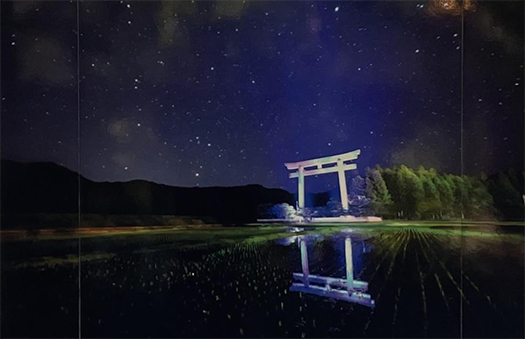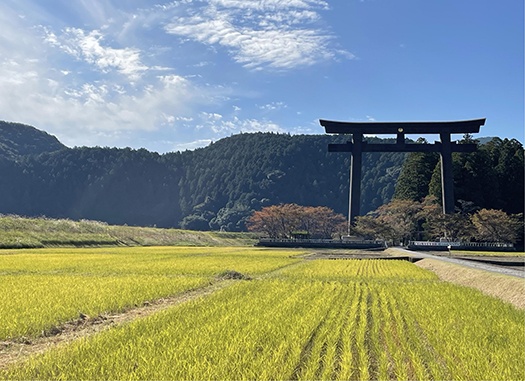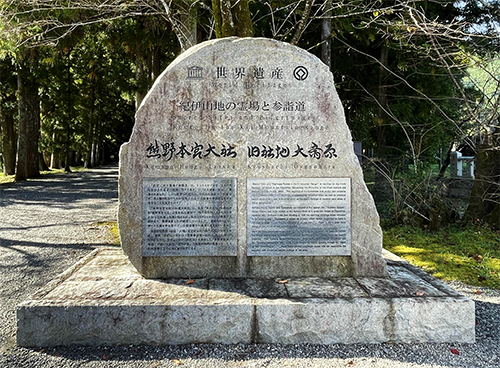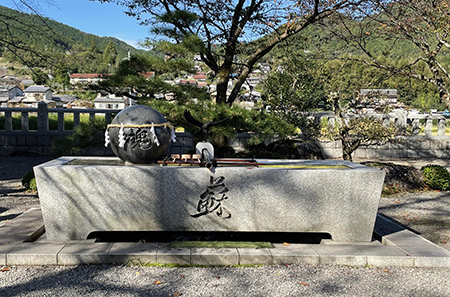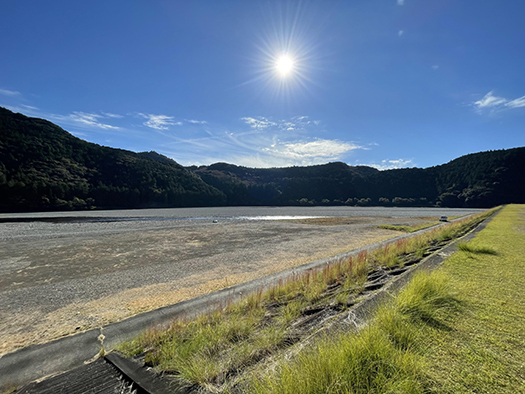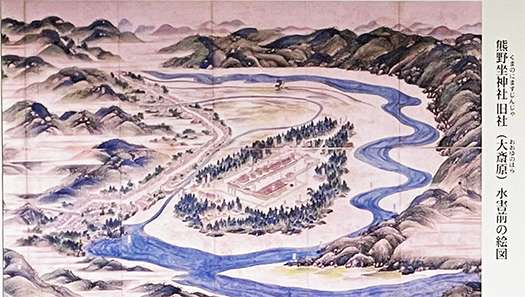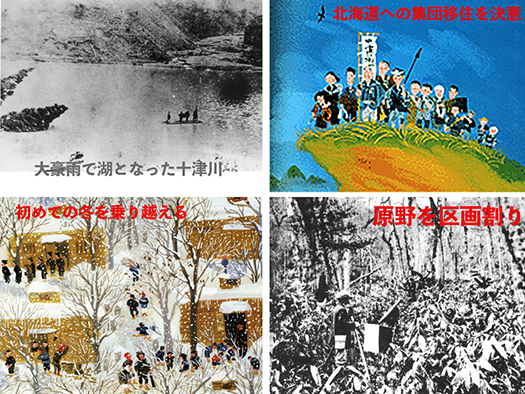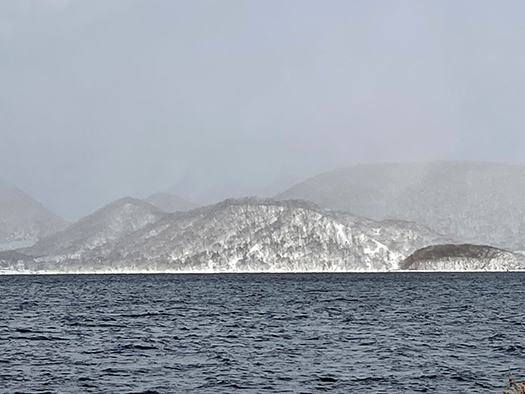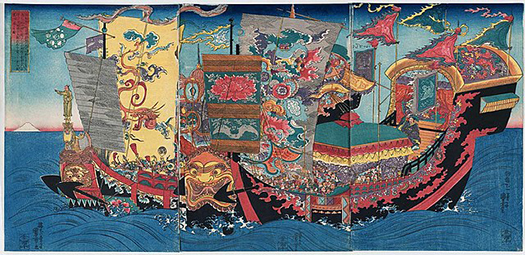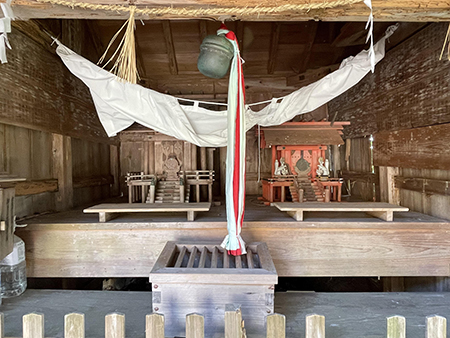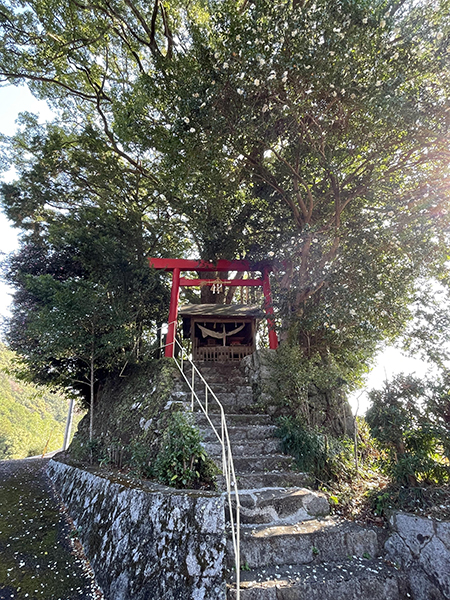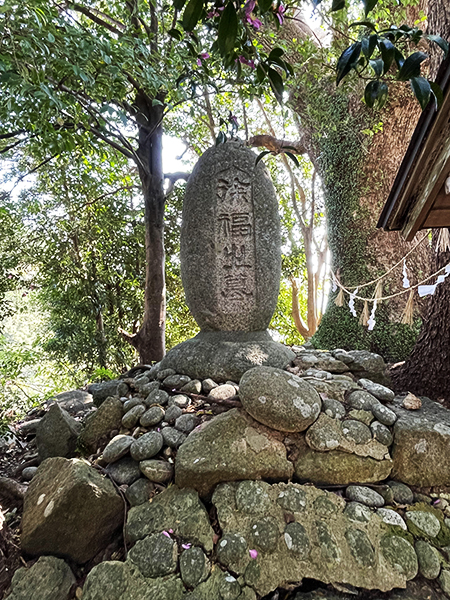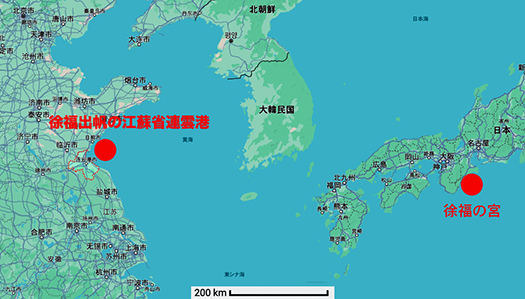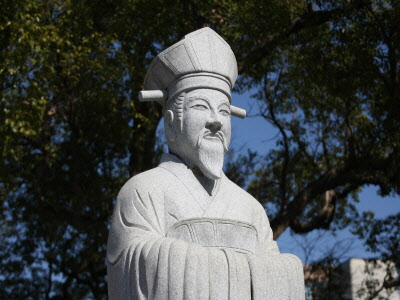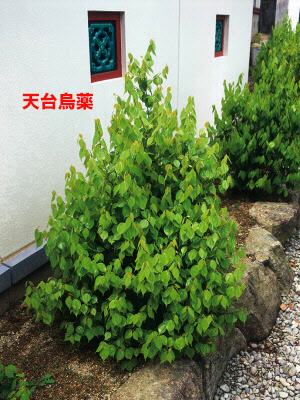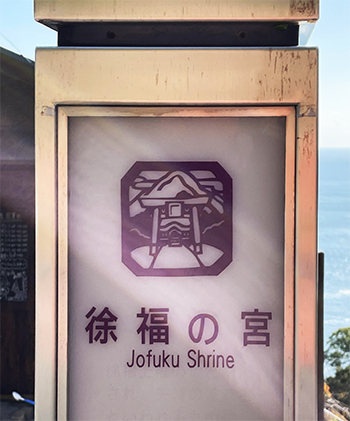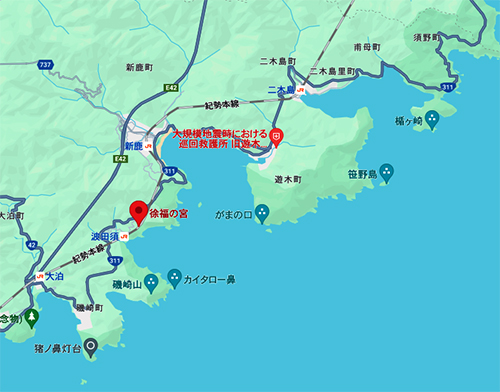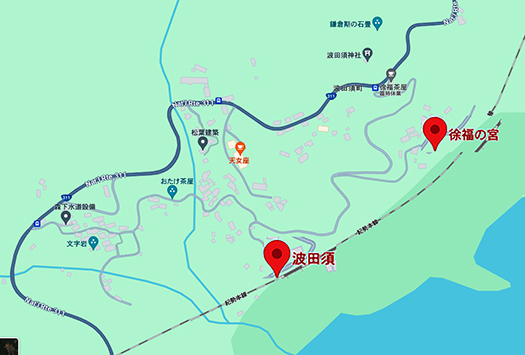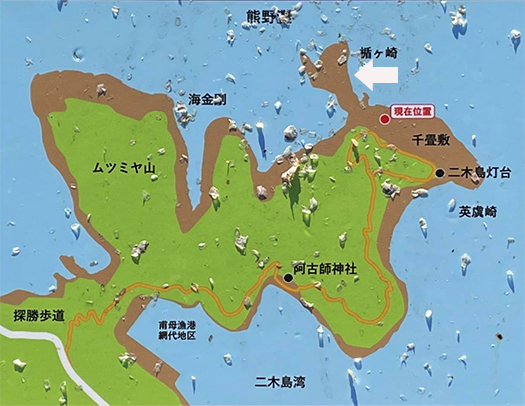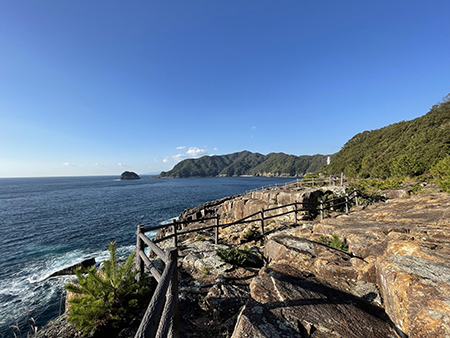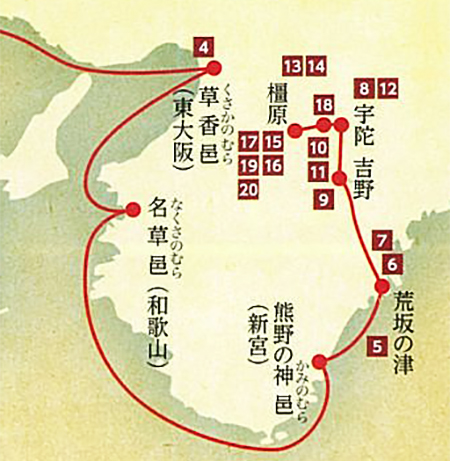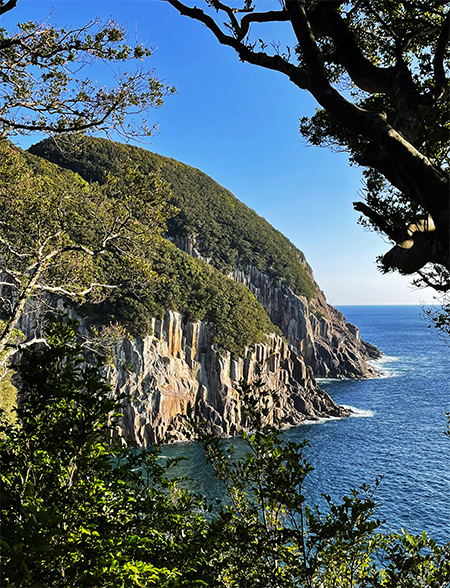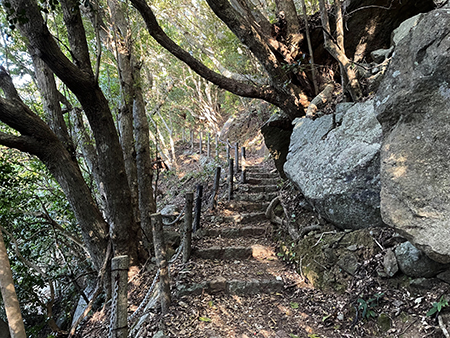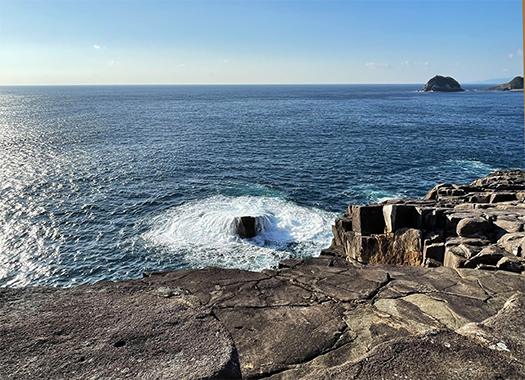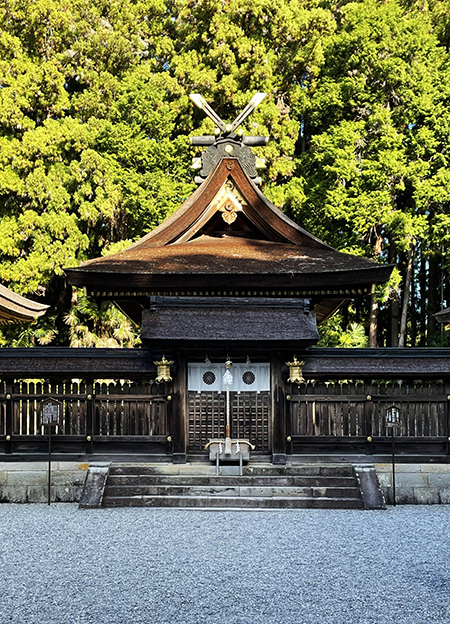
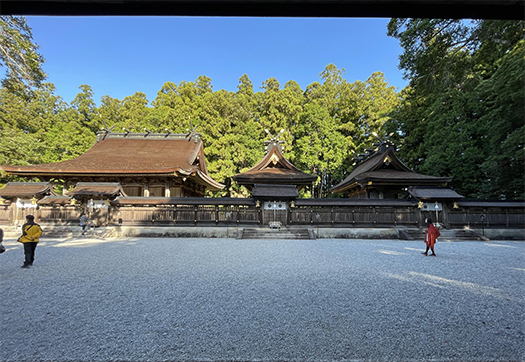
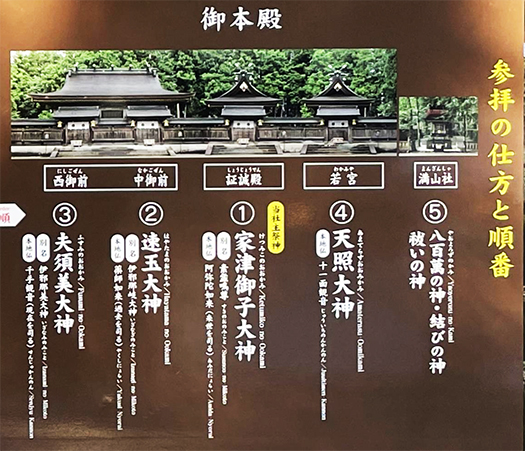
熊野を歩き始めたわたしの動機は、生来の歴史好きが高じて「皇統」について、その起源とされる初代の神武帝の「行軍路」についての身体的体験を得たいということ。また日本の建築文化というものを総合的に理解するためにもこうした知見はきわめて有用だと考えます。
それは日本人の「精神性」が端的に表現されると考えるからでもあります。そういう皇統の精神文化のなかの神話部分で、イザナギ・イザナミは別格としてもっとも著名な祖先神として、アマテラスとスサノオの「姉弟」の説話が非常に影響度が大きい。
太陽神とされ皇祖神として伊勢に祀られるアマテラスはいわば源流になるのだと思いますが、弟の「荒ぶる」神であるスサノオは、皇統神話のなかで特異な存在だと思います。アマテラスはこの弟の天上界での悪行の数々に、最初は鷹揚に対応するように命じていたけれど、それがどんどん増長するに及んで怒りを爆発させて、天の岩戸に隠れてしまって世界から太陽の光が消えてしまったという有名な神話エピソードを生成させた。
この熊野本宮にはじめて詣らせていただいて、その主たる祭神としてスサノオが祀られ、アマテラスもさらにイザナギ・イザナミにも優先するトップ順列で祀られることに内心驚かされた。
3枚目の説明看板「参拝の仕方と順番」であきらかなように、スサノオの別名・家津御子大神(ケツミコノカミ)がトップと位置づけられている。同説明では、アマテラスはスサノオと同列の神格が建築表現され、国生みのイザナギ・イザナミの夫婦神はひとつの建築に仲良く鎮座されている。そして最後に八百万の神々が整列鎮座されている。
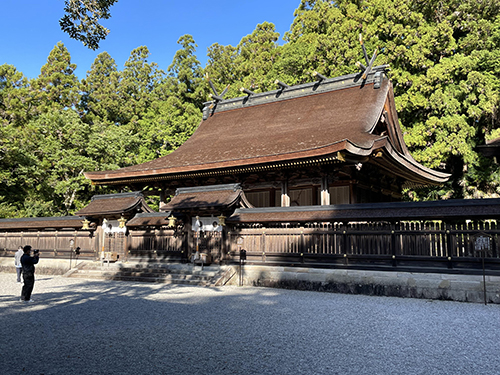
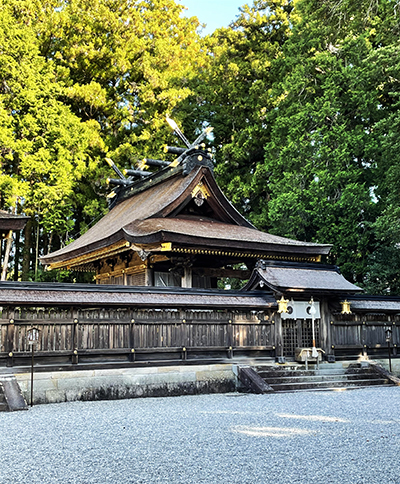
わたしは別に神道研究しているわけではありませんが、普通の日本人として習俗習慣としての神社信仰には素直な心理を抱いております。もっと言えば日本人の大きな精神文化としてのリスペクトは持っている。
そういうなかでスサノオさんをこのように正視できたのはここだけ。ケツミコノカミというのは、熊野権現の中心的な神であり平安時代から修験道で崇拝され,熊野信仰の広がりとともに各地に祭られるようになったとされる。ケツミコは「木津御子」で樹木の神の意であって、木の国紀州に植樹していったという神代の伝承に基づくとされている。
いろいろな皇統神話のなかでも異彩を放つスサノオというのはオモシロい。正統と異端というような仕分けで考えればあきらかに異端に属するのに、この熊野本宮では堂々たる主祭神。そして木の神とされるのであれば、日本建築がもっとも敬愛すべき神とも思える。
そんな妄想をたくましくさせられながら、内心、楽しい探索のきっかけを与えられたよろこびを感じさせていただいた次第です。それにしても皇祖神の大スターたちが一同に整列されている様は、さすがに熊野信仰の中心たる雰囲気を醸し出していますね。
English version⬇
The main shrine of Susanoo-no-Mikoto, the main deity of the Imperial lineage Mythology and Kumano Journey-15
Susanoo, who was abhorred in the heavenly realm for his evil deeds and rough behavior, became the main deity as the “God of Trees”. He took precedence over Amaterasu, Izanagi and Izanami. The strangeness of the Kumano faith.
My motivation for walking in Kumano was to gain physical experience of the “marching route” of the first Jinmu Emperor, who is said to have been the origin of the “imperial lineage” due to my innate love of history. I also believe that such knowledge is extremely useful for a comprehensive understanding of Japanese architectural culture.
This is also because I believe it will give a clear expression to the “spirituality” of the Japanese people. Aside from Izanagi and Izanami, the most prominent ancestor deities in the mythological part of the spiritual culture of the imperial lineage are the highly influential “sister and brother” stories of Amaterasu and Susanoo.
Amaterasu, who is considered the sun goddess and is worshipped at Ise as the ancestral god, is, so to speak, the origin of the myth, but her younger brother Susanoo, the “rough” god, is unique in the mythology of the imperial lineage. Amaterasu had initially ordered her brother to deal with his many misdeeds in the heavenly realm in a hawkish manner, but as they grew worse and worse, he exploded in anger and hid in the Iwato of Heaven, causing the famous mythological episode of the disappearance of the sun’s rays from the world.
When I visited the Kumano Hongu Shrine for the first time, I was surprised to see Susanoo enshrined as the principal deity and Amaterasu in the top order of precedence over Izanagi and Izanami.
As the third signboard explains, “How to worship and the order of worship,” Ketsumiko no Kami, another name for Susanoo, is positioned at the top of the list. In the same explanation, Amaterasu is represented as being on the same level of divinity as Susanoo, and the couple Izanagi and Izanami, the birth of the nation, are seated together in a single structure. Finally, the eight million deities are seated in a row.
I am not a Shinto researcher, but as an ordinary Japanese, I have an honest psychological attachment to shrine worship as a customary practice. More specifically, I have respect for Shinto as a major spiritual culture of the Japanese people.
This is the only place where I could look at Susanoo in such a positive way. Ketsumiko-no Kami is the central deity of Kumano Gongen and has been worshipped in Shugendo since the Heian period (794-1185), and as the Kumano faith spread, he came to be worshipped in various places. Ketsumiko means “Kizumiko,” the god of trees, and is said to be based on the legend of the Kami period that trees were planted in Kishu, the land of trees.
Among the various myths of the imperial lineage, Susanoo, who is unique, is interesting. Although he is clearly a heretic in terms of orthodoxy and heresy, he is the main deity at Kumano Hongu, and is regarded as the god of trees. And if he is regarded as the god of trees, he seems to be the most revered deity in Japanese architecture.
While being inspired by such delusions, I was inwardly feeling a sense of joy at having been given the opportunity to enjoy an enjoyable exploration of the area. The presence of all the great stars of the Imperial Ancestral Gods in one place was indeed the center of the Kumano faith.
Posted on 1月 17th, 2024 by 三木 奎吾
Filed under: 日本社会・文化研究 | No Comments »


